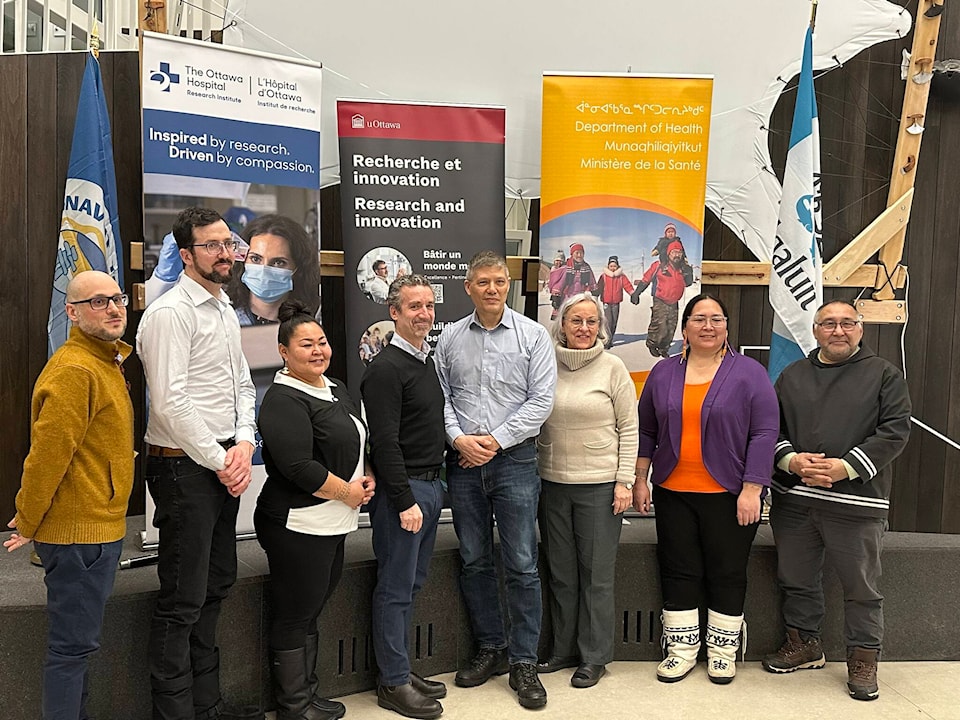Nunavut continues to struggle with periodic outbreaks of tuberculosis, as the territory saw again in 2023 in Pond Inlet, Naujaat and Pangnirtung, but an enhanced effort to detect the disease is on the way.
Wastewater from the men’s shelter in Iqaluit will be analyzed for signs of tuberculosis (TB) as part of a five-year study, it was announced on Jan. 16 at Nunavut Arctic College.
Since the beginning of the Covid pandemic, scientists have been using wastewater as a critical measuring tool to monitor infectious diseases worldwide. Using the same concept, scientists from the University of Ottawa, the Canadian Institutes of Health Research and other organizations have come together to form a “dream team” of sorts for the collaborative Nunavut initiative that will “explore wastewater monitoring as a tool to detect and prevent the spread of TB.”
“It’s an incredible trajectory… to see all these partners come together,” said Rob Delatolla, professor of environmental engineering at the University of Ottawa and a “world expert” on wastewater monitoring.
Disproportionately affecting the Inuit population by a rate of 400 percent, TB is a highly contagious and potentially fatal bacterial respiratory infection transmitted through the air.
Delatolla explained that TAIMA TB, as the Nunavut project is known, and its steering committee is a 10-member organization founded in 2011 “with an established record for effectively working together with knowledge-holders, policy decision-makers, and knowledge users. They use a platform where members can actively participate in the overall guidance of studies and facilitate the dissemination of knowledge provided by this research… TAIMA TB studies are built on a foundation of inclusive research governance, engagement, and knowledge translation, and I would encourage folks to visit our website, which we are eternally grateful to [Nunavut Tunngavik Incorporated] for supporting that website on their portal. If you Google TAIMA TB you can go to that website, you can view all of our history and all of our studies that we have generated over the last decade or so.”
In a news release and press conference in Iqaluit on Jan. 16, it was explained that “the five-year research study aims to develop and optimize TB wastewater monitoring in the city of Iqaluit to determine if earlier detection of TB bacteria in wastewater can allow for earlier public health interventions to treat the disease and reduce transmission.
“This study builds upon the current TB program in Nunavut, complementing the effectiveness of TB diagnostic methods such as skin tests, sputum tests, and chest X-rays. While these methods continue to successfully identify TB, the new study aims to establish another layer of early detection to the existing strategies,” the proponents stated.
“We can treat it and prevent it from spreading if we can find the people that have TB… ordinarily… healthcare teams have to go to isolated communities… such as recently in Pangnirtung, and screen everyone… which although effective, is expensive and labour intensive,” Delatolla explained. “Better tools are needed to improve this ability to screen for TB in remote regions like Nunavut simultaneously in real time and not just in one community alone. Diagnosing and treating those with active TB, while in its early stages, is a key component of reducing the impact of TB on the individual and the community. Wastewater, or sewage monitoring, might provide a powerful new tool to focus screening efforts and potentially allow earlier deployment of public health interventions to treat and stop TB transmission.
“I want to be clear that the proposed research is not an instant solution to eliminating TB from the territory, although that is our ultimate goal,” added Delatolla.
Sean Watchel, Nunavut’s chief public health officer, said, “The potential of this research, should the hypothesis be proven, should not be underestimated… this research has the potential to allow for much more efficient and rapid targeting of affected areas… and would allow the much more efficient and rapid use of resources to help TB elimination in the territory. Central to the success is the collaboration between the partners.”
